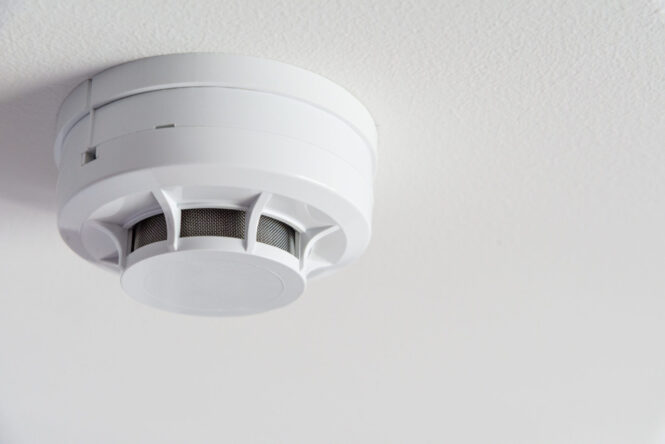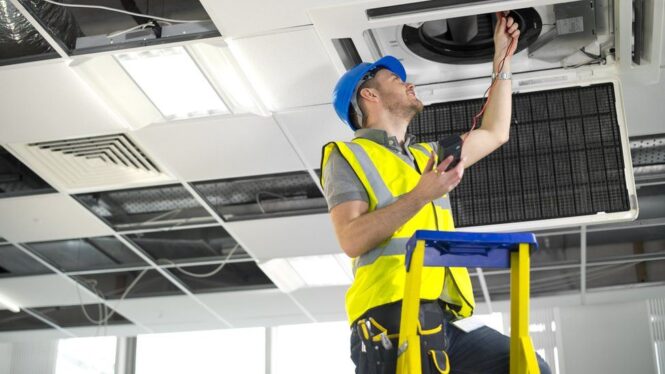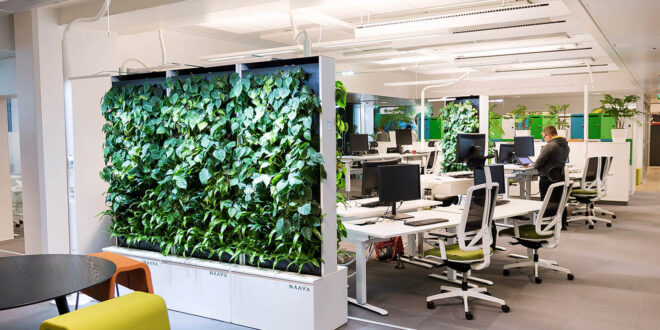Air quality profoundly affects our daily lives, especially in confined spaces like offices. Clean air enhances cognitive function, reduces sickness, and boosts productivity. Extended exposure to unclean air can lead to chronic health issues and decreased worker morale.
This blog delves into nine invaluable tips that promote cleaner surroundings, ensuring office spaces are both healthier and more efficient. Prioritizing its quality can result in long-term economic benefits due to increased worker efficiency and reduced sick days.
Understanding Indoor Air Pollution
When one hears “air pollution,” towering factories and congested roads might come to mind. Yet, enclosed spaces, such as offices, can harbor pollutants at levels sometimes higher than outdoors. Sources range from dust and mold to chemicals emanating from furnishings.
These silent invaders are often overlooked because they’re unseen. Continual exposure exacerbates respiratory conditions, triggers allergies, and diminishes cognitive abilities. It’s not merely about comfort; it’s a matter of public health and workplace efficiency, making proactive measures vital.
Regular HVAC Maintenance
HVAC (Heating, Ventilation, and Air Conditioning) systems play a pivotal role in ensuring clean air indoors. They filter out contaminants, maintain temperature, and circulate fresh air. However, if not properly maintained, they become a liability.
Filters that aren’t replaced or cleaned can become saturated with pollutants, reducing efficiency and potentially becoming sources of contamination themselves. Regular maintenance, such as quarterly checks and yearly deep cleans, keeps HVACs running optimally and ensures that the gas workers breathe is of the highest quality.
Monitoring and Measurement

The adage, “You can’t manage what you can’t measure,” holds particular resonance when addressing air quality. Relying on intuition or occasional observations can lead to gross oversights.
Modern offices should prioritize installing top-quality gas monitors, or a vape alarm, and similar devices that can detect a broad spectrum of pollutants, from dust to harmful gasses. These advanced devices, often connected to centralized systems, offer invaluable real-time feedback.
This immediacy ensures that if pollutant levels breach safety thresholds, interventions can be swiftly executed. Consistent monitoring not only acts as an early warning system but also as a performance indicator, shedding light on the success of existing air quality measures.
As data is amassed over months and years, it provides a holistic view, enabling decision-makers to tailor strategies more effectively, ensuring that the gas employees breathe is consistently of the highest standard.
Proper Ventilation Strategies

Stale air promotes the growth of contaminants. Proper ventilation, which allows for a steady exchange of indoor and outdoor air, is crucial. Mechanical systems, like fans and vents, play a role. However, natural ventilation—utilizing windows and vents—can significantly decrease indoor pollutants.
An office’s location and architecture often dictate ventilation needs. A hybrid system, blending both mechanical and natural methods, ensures optimal exchange, giving workers the best environment for their tasks.
Air Purification Technologies
Beyond just letting fresh air in, active purification supercharges the cleanliness of office air. Modern technologies are incredibly effective. HEPA filters can capture particles as small as viruses, and UV-C lamps neutralize airborne pathogens. Ionizers and activated carbon filters can remove odors and gaseous pollutants.
For offices in particularly polluted areas or specific industries, a combination of purification methods might be optimal. Investing in top-notch purification translates to healthier employees and, consequently, a more productive office environment.
Indoor Plants for Air Quality

Nature offers a beautiful and effective solution—indoor plants. More than just decorative, plants like the Peace Lily, Boston Fern, and Spider Plant actively absorb pollutants. These green wonders process toxins and output clean oxygen, making the air fresher.
Strategically placing these plants not only boosts its quality but also enhances office decor, mental well-being, and overall worker morale. The added greenery can make spaces more inviting and provide a touch of tranquility amidst busy office hours.
Low-VOC Materials and Furnishings
VOCs are chemicals that evaporate at room temperature, commonly found in office products like paints, adhesives, and even some electronics. These subtle emissions can accumulate, and prolonged exposure can affect health, from headaches to more severe conditions. Offices should opt for low-VOC or VOC-free materials.
This not only safeguards worker health but can also contribute to green building certifications and create a reputation for an eco-friendly work environment, attractive to both employees and clients.
Regular Cleaning and Maintenance

Cleanliness is next to godliness, and in the realm of air quality, this adage shines brighter. Regular cleaning not only enhances visual appeal but is instrumental in drastically reducing the accumulation of dust, mold, and allergens. Using state-of-the-art HEPA-filtered vacuums ensures that even minute particles are effectively trapped, while microfiber cloths have an innate ability to grasp onto and eliminate pollutants.
Instituting a regimented bi-weekly deep clean, with special attention to high-traffic areas like meeting rooms or pantries, ensures that the office remains a safe and pure sanctuary. Just as important as the cleaning process is the choice of products used. Opting for natural, eco-friendly cleaners, free from volatile organic compounds or other harmful chemicals, is essential in ensuring the air remains pristine post-cleanup.
To better understand the importance of office cleaning, read our article explaining how many times a year a should office be deep cleaned providing cleaner air for you and your colleagues.
Employee Education and Engagement
The journey to clean air isn’t solely reliant on tools or technologies; it’s fundamentally a human endeavor. While state-of-the-art systems and regular maintenance are pivotal, employees are the lifeblood of any office and play an integral role in this crusade.
Arming them with knowledge on best practices, such as the proper storage of food, embracing eco-friendly personal products, or being vigilant about potential risks like mold, is invaluable.
Hosting regular workshops or seminars not only equips them with the latest knowledge but fosters an environment of shared responsibility. Additionally, creating incentive programs that might include tangible rewards or recognition can spur proactive behaviors, ultimately cultivating a vibrant culture of health consciousness and collective wellbeing.
Office Layout and Design

The design and layout of an office play an understated but crucial role in air quality. Open concepts, though trendy, should be designed keeping airflow in mind. Strategic partitioning ensures air doesn’t stagnate in corners.
Thoughtful design, considering window placement, air vents, and even the positioning of workstations, ensures both aesthetic appeal and maximized air circulation. Investing in design professionals can yield layouts that are both functional and conducive to top-tier air quality.
Conclusion and Call to Action
Cleaner air in offices isn’t merely an aesthetic or comfort objective; it’s a public health and productivity imperative. The outlined nine tips provide a comprehensive strategy for transformative results. With the evident health and efficiency benefits, it’s imperative for management at all levels to act.
We spend significant portions of our lives working; let’s make that time breathe easy. For the sake of every stakeholder, from the intern to the CEO, prioritize air quality now!
 Imagup General Magazine 2024
Imagup General Magazine 2024



